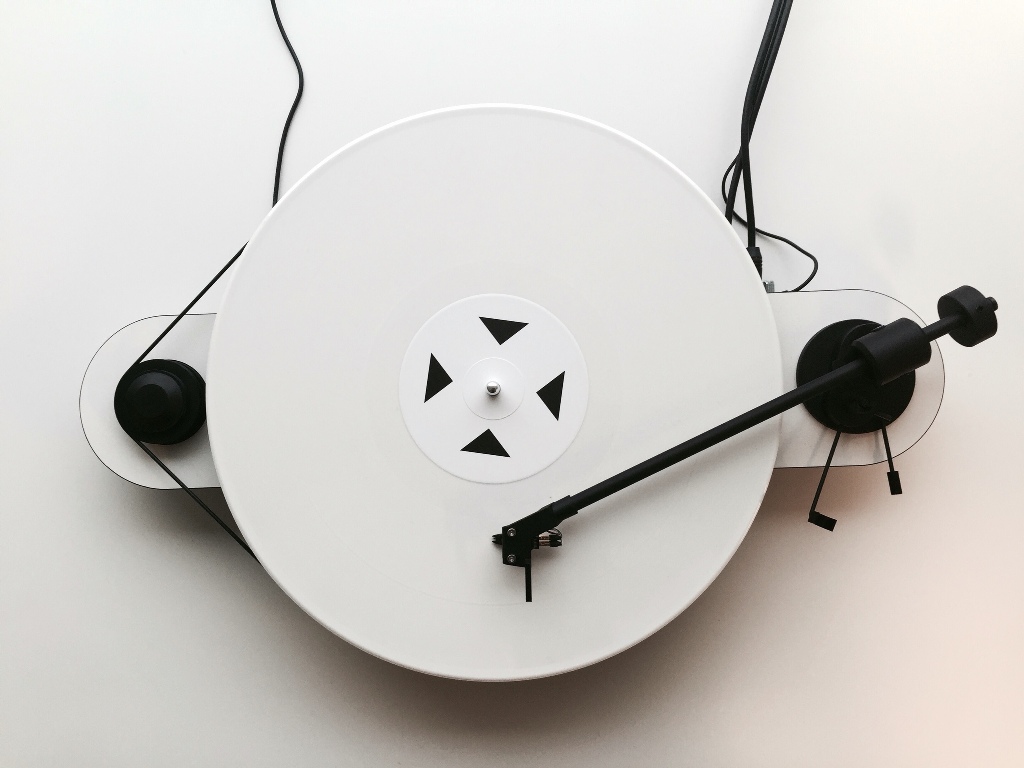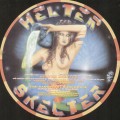
CPU Records boss Chris Smith reflects on a decade of releasing music
Central Processing Unit, better known as CPU Records amongst fans and friends, is a notable beacon among independent electronic music labels in the UK over the last decade. Founded in Sheffield in 2012 by Chris Smith, the label represents a solid bridge between different generations of electronic music lovers – stamped with a unique aesthetic and identity that celebrates machine made music’s futuristic outlook and roots.
Deeply influenced and shaped by the early Sheffield Bleep era, since its inception CPU has etched its own place at the forefront of contemporary Electro music. Embracing past, present and future – rather than falling into the role of being a platform of paying tribute to the past and rehashing old ideas, the label has quite simply put its best foot forward and brought a together a rich sonic tapestry that embraces many different angles. Now boasting an enviable roster of artists and highly collectable discography which includes the likes of Cygnus, Plant 43, Annie Hall, Automatic Tasty, Morphology, DMX Crew, Microlith, Nadia Struiwigh, Silicon Scally, Nullptr and local talent 96 Back alongside a host of others.
From the get go, Smith chose to embrace a distinctive design ethos working closely with Human Studio – a local based creative agency that’s worked with the likes of MTV and channel 4. With a steer from them, look and feel was the first thing to be taken into consideration, which is why the label makes use of an 8 digit binary catalogue number system for all the releases and only allows for 256 records in total. At an aesthetic level, numeric values are in fact the only thing that distinguishes each release from the next: meaning label artists get assigned a number and have to wait their turn.
Although quite some way off the final curtain, CPU reached its 100th release in August 2021 and has also been running for over a decade now, which is no mean feat in today’s landscape by any stretch of the imagination. Given the label’s rich catalogue and continuing mission to unearth and present gems from artists at the top of their game, we reached out to Chris for a chat and to reflect on releasing music over the last decade.
How would you say Sheffield and its rich musical legacy has shaped you and your outlook?
“I grew up in Sheffield listening to Gary Numan, Ultravox and Human League because my older brother used to play them in our house all the time. During that time I was also playing a lot of video games, so all things electronic were instilled in me at an early age.
It wasn’t until 1990 I got into techno thanks to a mix tape doing the rounds at school which had Sweet Exorcist – Testone and other early Warp / Outer Rhythm tracks on it. This inspired weekly trips to the old Warp Records’ shop on Division Street and turned into a serious vinyl habit.”
What were the first parties you attended back then?
“Techno City at Occasions on Rockingham Street was the first proper club I went to. Around the same time I used to go to The Jam Factory at The Palais on London Road. Both were great club nights that brought amazing DJs to Sheffield.”
And who were your biggest influences on a local level at the time?
“The mixtape I mentioned was handed to me at school by a DJ duo called ‘Two in pleasure’, two brothers called Dan & Paul Metcalfe. Through them I discovered Asterix & Space (Chris Duckenfield and Richard Benson) and the local pirate radio station ‘SCR’ (Sheffield Community Radio).
Suffices to say that spiralled into a lifelong affair with techno.”
When did you actually get into DJing then?
“I used to listen to DJ Sasha a lot, his mixes – especially his studio mixes were absolutely perfect and I always aspired to his standard. I got my first decks around 1991 and a few years later had various DJ residencies around Sheffield.”
What led you into making and producing music?
“Since I first took up DJing, I’d always wanted to make music. I used to visit a recording studio just off Division Street in Sheffield with my pal John Shima.
We actually made our first tracks around 1992-3, but time was money in the studio and we were pretty skint so didn’t get the amount of time we would have liked. But that spurred us on to save for studio gear.”

Which equipment did you choose to buy to get yourself started?
“The first proper studio gear I bought was a Novation DrumStation and BassStation back when they were first released. I also bought a Roland JS-30 sampler, which when I got it home discovered it had no way of saving built in, and I hadn’t factored in the high price of an external SCSI zip drive so traded it in for an Akai S01. I used an Atari 1040STE with Cubase for sequencing duties.
After getting by using various DJ mixers I eventually got a Spirit Folio F1 mixer and some Spirit Absolute 2 monitors. The only kit I still have from back then though is the Atari ST but don’t use it for music. I did retrieve some old song files from Atari floppy disks last year though and keep saying I’ll get them finished one day.”
Why did you decide to start a label?
“I’d also wanted to start a label for years, probably the late 90s but it wasn’t until much later when several things fell into place that I took the opportunity. I used to run an internet radio station called Sheffield Bleep (2005-2009) which was where I cut my teeth in internet marketing. I had built up a large network from running the station and was able to tap into it when I got things started.”
And what was your initial idea for the project?
“I used to scour Wikipedia for potential label names, mainly science and computer related subjects and gathered a long list of potential label names that I liked.
I approached Human, a design studio in Sheffield to create the look of the label. They helped me narrow down my list of potential label names, eventually settling on ‘Central Processing Unit’. That allowed them to develop a suitable style for the label.
I had approached a few artists on an old electronic music forum called XLTronic who agreed to release their music on the label (Cygnus & Fah). Once everything was ready I pitched the label idea to Kudos distribution who agreed to take on the label.”

Over a decade on and you’re going strong: what’s been the key to your survival and success?
“Having a good ear for music, being able to undertake several roles at once and being very patient…”
Would you have done anything differently looking back?
“I would space releases out a bit more, I was hitting over one release per month at one point which was very stressful especially with all the problems that come with vinyl manufacturing. Artists are definitely more understanding now about vinyl delays, long gone are the days when you could get a demo to vinyl in 3 months.”
What sort of advice do you have for anyone thinking of setting up their own imprint?
“Do something a bit different. Stand out from the crowd. There is a lot of noise out there. Have a vision and game plan. Pressing vinyl is expensive (really expensive) so make sure you are 100% certain about the music you are releasing.”
How would you sum up the CPU story in 10 tracks
Cygnus – Newmark Phase
CN – Voyages
Mrs Jynx – Diving Loop
Mikron – Sleep Paralysis
Morphology – Mirror Comparator
Noumen – White Silence
S>>D – Co Intel Pro
Nullptr – AFTRMTH
Annie Hall – Fum
Silicon Scally – Field Lines
What have you got next on the release schedule?
“After Bochum Welt, we have a CPU debut for Dynarec with a 4 track EP, followed by another EP from Blackploid. Hopefully a few surprises before the end of year too!”




